24 Hours Hotline: +86 137-3541-1378
Email:[email protected]
24 Hours Hotline: +86 137-3541-1378
Email:[email protected]
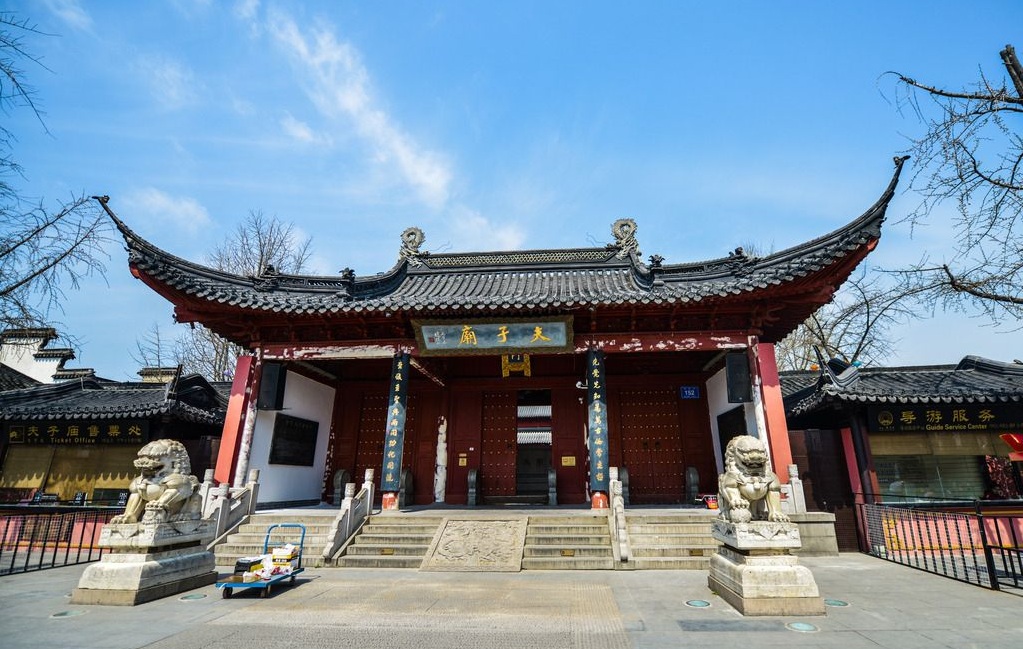
Confucius Temple, Nanjing Attractions
Introduction
The district in the southern part of Nanjing is notable for the magnificent Confucius Temple that takes its name from this country's greatest ancient scholar. Built during the Song Dynasty (AD 960-1279), the Confucius Temple was initially referred to as Fu Xue (equivalent to today's public school), and was later transformed and enlarged to its present magnificent form. Over the centuries it was damaged and rebuilt several times, and stands today as an imposing complex with dramatic pavilions, towers, roofs and tilted eaves. A number of ancient buildings are to be found around the temple, including Dazhao Wall, Jiuxing Gate and Kuiguang Pavilion. The Dazhao Wall was built during the Ming Dynasty (AD 1368-1644), and the statue of Confucius in Dacheng Palace is the largest of its kind in the country.
"China's ancient dynasties paid homage to Confucius to maintain social harmony," says Zhou Hongyu, a professor at the Central China Normal University in Wuhan, capital of Hubei province. "Many literary greats are also worshipped in Confucian temples to widen the understanding of Confucianism. These temples are the pantheons of Chinese culture." Confucian scholars played a pivotal role in China's education system in ancient times and helped spread Confucianism to Vietnam, Japan and the Korean Peninsula, among other places. Zhou says further comparative study between China's Confucian sites and their counterparts abroad is also necessary. While the new report praises the progress made in recent years to increase public awareness on Confucius' philosophy and preserving traditional culture, more needs to be done to restore the sites. "The Confucian temples in different places have developed diverse characteristics," says Chen Wei, a professor from Southeast University in Nanjing, capital of Jiangsu province.
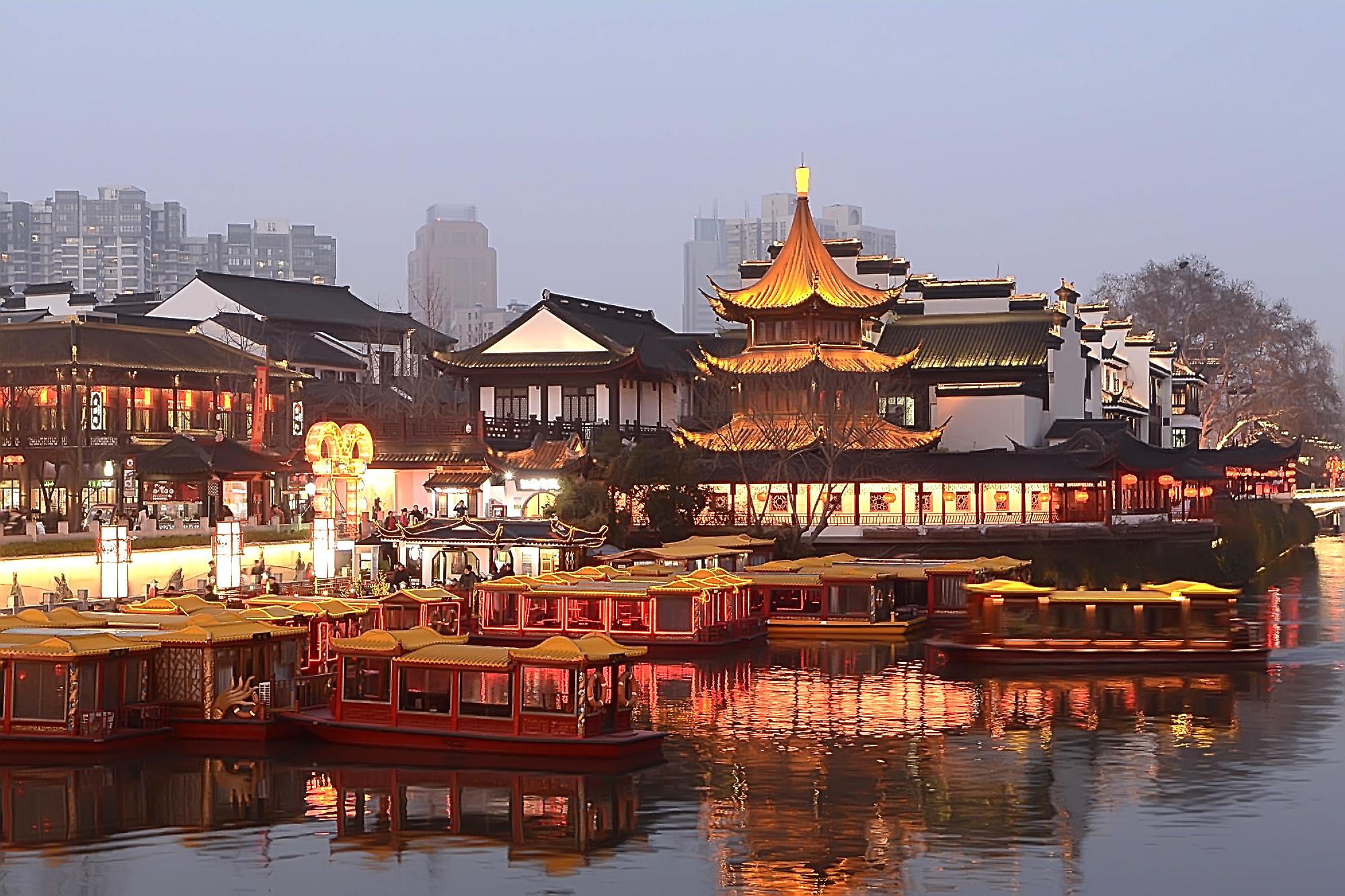
She adds that the lack of in-depth research has led to many such structures looking similar after renovation. She cites the example of the Confucian temples in Nanjing and Suzhou. While the design of the temple in Nanjing-the biggest examination hall in ancient China-revealed the city's prominence in port trade, the temple in Suzhou bears influences of garden design, which the city is known for. "The two places have various cultural meanings, which are also reflected by the architecture," she says.
"However, the temple in Nanjing features a Suzhou-style architecture after renovation." The report also points out that half of the Confucian temples are located in old towns, which are facing huge pressure amid the renovation of traditional neighborhoods. "The Confucian temples are centers of many old Chinese towns," says Tang Yuyang, a professor at Beijing University of Civil Engineering and Architecture. "Nevertheless, when renovating these temples, their adjacent historical landscapes are easily neglected."
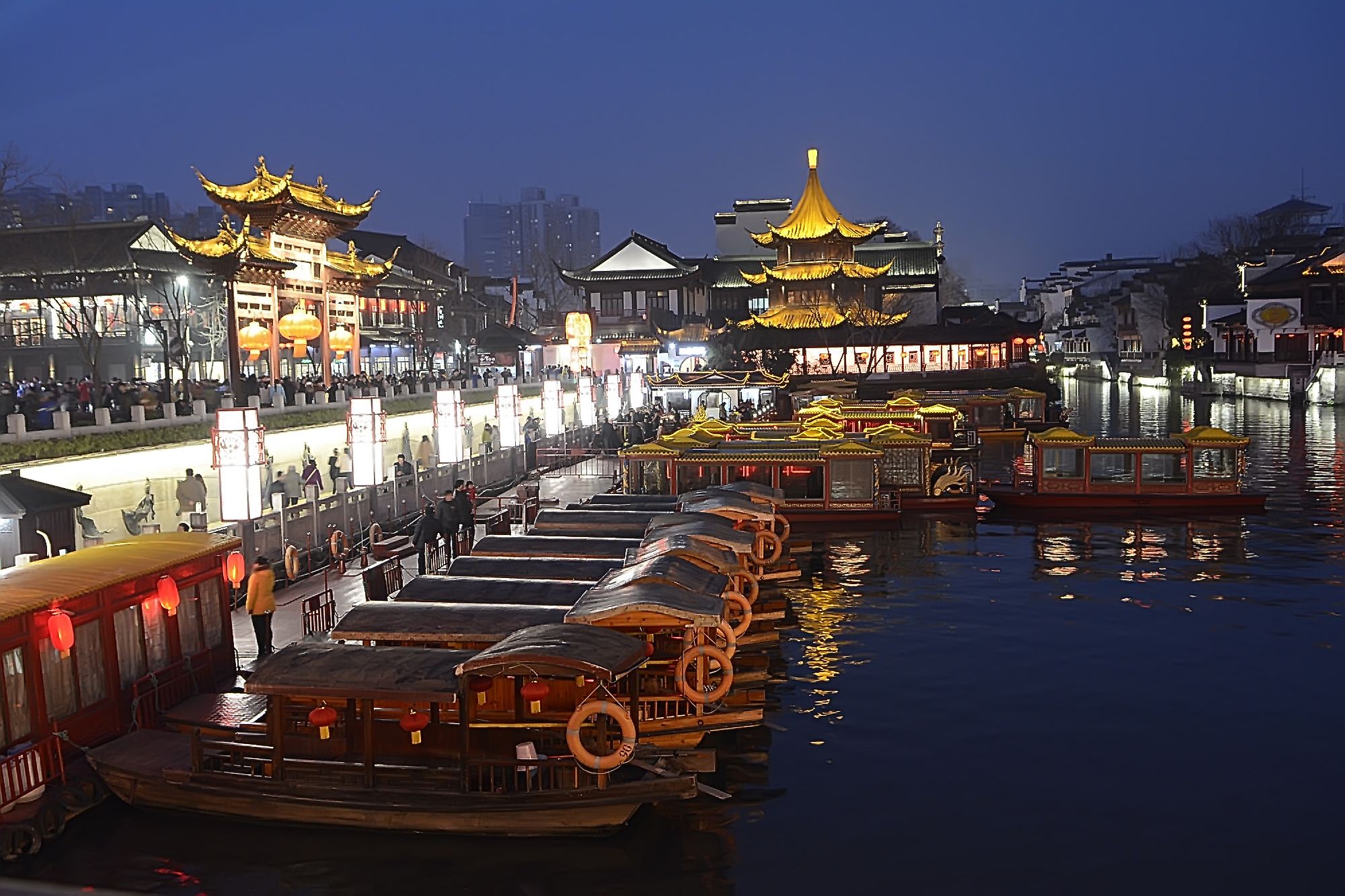
She says that many structures near such temples are demolished, creating challenges for the survival of such sites. The report says about 30 percent of Confucian sites are still not open to the public and some of them are not even known to the local people.
Every year, millions of visitors from home and abroad come to the area to experience the essence of the city's history and culture. "My visit here has helped to increase my knowledge of Chinese culture, and every time I come here I get a deeper understanding of Confucian thought," said a Chinese student from Scotland who has visited the place many times.
What to See in Confucious Temple
Symbol of romance
In front of the temple flows the famous Qinhuai River, witness to many romances throughout history. Poets, novelists and painters have been inspired by the unique scenery and customs of the area, writing memorable pieces that have been passed down through the generations.
The poet Zhang Zhongsu of the Tang Dynasty (AD618-960) wrote:
Far away on the old city walls,
The willows
Are clouds of grey,
Row on row
The mulberries grow
All clad in robes of green.
The poem describes a famous calligrapher, Wang Xianzhi (AD 344-386), from the Eastern Jin dynasty (AD 317-420). He is depicted as wandering along the Qinhuai River enjoying the beautiful scenery on both banks.
Unique Shopping Area
The area came to prominence as the city's commercial and trading centre during the Ming Dynasty (1368-1644), and remains the city's busiest shopping quarter to this day. Walking around, one feels the hustle and bustle of everyday life. The shouts of peddlers bartering fill the air. Many local folk gadgets and commodities, unavailable in other parts of the country, can be found here. For instance, Yuhuashi (Rain Flower Pebbles), rare stones with naturally occurring patterns, are a unique buy for visitors. "The Qinhuai River, flourishing and bustling" is a line from early 20th century scholar Zhu Ziqing, reflecting the Qinhuai River area during any period of its history.
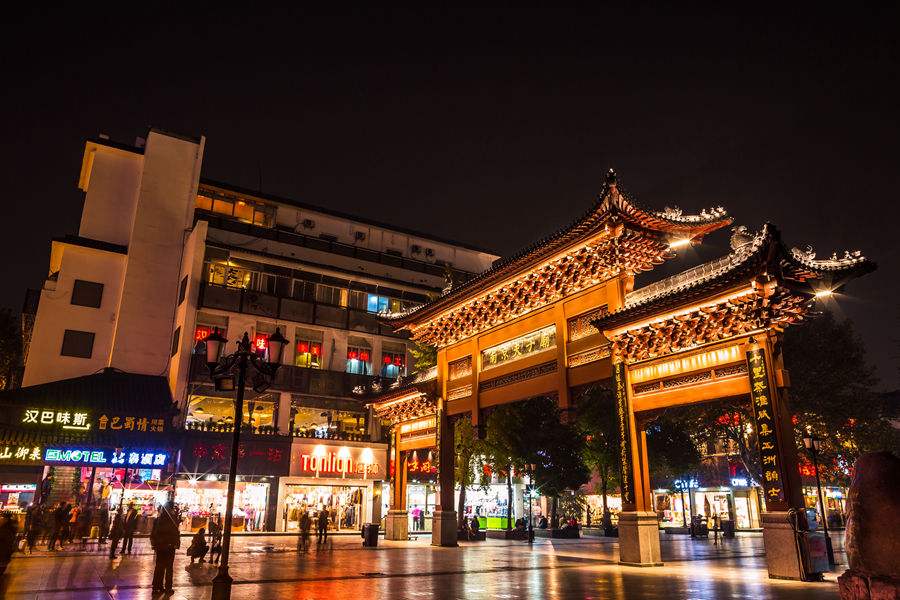
Sea of lanterns
Residents of this area have long had an affinity for lanterns. Starting during the Ming Dynasty, the Lantern Festival is still popular here today. Traditionally lit to celebrate big Chinese festivals, lanterns in the Confucius Temple area are known as among the best in the country. "The lanterns of Qinhuai are the best under heaven," as the old saying goes. Every Spring Festival, the Confucius Temple area swims in a sea of lanterns. During the period, craftsmen present their best work, adding to the festive atmosphere. On the square in front of the temple, people surround stands hung with lotus lanterns, watermelon lanterns, flower lanterns, among hundreds of other kinds, both to appreciate and buy. Almost everybody goes to the area during the Spring Festival to buy colourful lanterns, in the hope of bringing good fortune to their homes. "The lanterns are so vivid and beautiful that they make me dizzy," said an excited visitor from neighbouring Shandong Province.
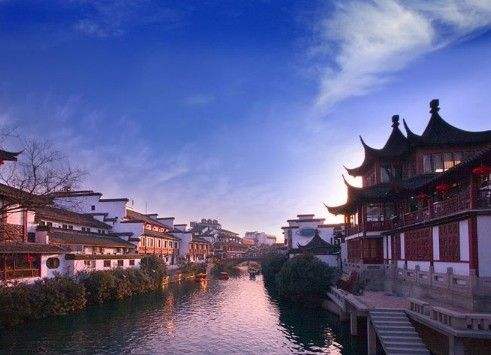
Mouth-watering snacks
Another thing visitors should not forget to do when visiting Nanjing is to taste the delicious snacks available in the Confucius Temple district's restaurants. The Confucius Temple area is believed to be the source of Nanjing's snacks and the best place to find delicious treats. Jellied beancurd, fried scallion pancakes, beef soup, beef-stuffed guotie (lightly fried dumplings), spiced broad beans and spiced eggs are favourites with visitors. Visitors can also enjoy Jiangnan dancing and singing with the special Qinhuai folk culture while tasting the delicious food. Nanjing people are friendly and hospitable. They take friends to the Confucius Temple area and treat them to the very palatable snacks.
Transportation:
Metro Routes:
Take Metro line 1 and get off Shansan Street
Bus Routes:
Take bus No. 16, 26, 33, 44, 46 and get off Shansan Street
Take bus No. 16,26, 33, 44, 49, 802 and get off Changle Road
Take bus No. 1, 4, 7, 30, 33, 34 and get off Coufucius Temple
Travel Guide
Admission Fee: Free
Coufucius Temple (CNY15)
Address: Gongyuan Street, Nanjing, China
Tel: +86 25 8662 0123
Recommended Time for Visit: 2 hours
Duration:6-8 hours
Attractions(Cities):Sun Yet-Sen Mausoleum, Presidential Palace, Lingu Temple, Confucious Temple
Tour Style:Make the most of your time to get a unique travel experience in Nanjing on a full-day Nanjing tour. Served as the capital city of ancient China, Nanjing is endowed with profound history and cultural sites. With your knowledgeable and historical guide, you'll visit the majestic Sun Yat-Sen Mausoleum, marvel at the Presidential Palace, explore the peaceful Lingu Temple, and follow in the paths of emperors on a relaxing Qinhuai River cruise near the Confucius Temple. This tour combines rich history, stunning architecture, and beautiful natural surroundings, offering you an immersive experience of Nanjing's culture and heritage. It is a perfect private-designed tour to lead you through Nanjing's timeless landmarks with comfortable city transfer, ensuring a smooth and unforgettable journey.
Duration:6-8 hours
Attractions(Cities):Nanjing Massacre Museum, Ming Xiaoling Mausoleum, Presidential Palace, Confucius Temple
Tour Style:This one-day Nanjing sightseeing tour offers a perfect blend of history, culture, and scenic beauty. Your day begins at Sun Yat-Sen’s Mausoleum, nestled against the stunning backdrop of Purple Mountain, where you’ll learn about the legacy of modern China’s founding father. Next, visit the Ming Xiaoling Mausoleum, the burial site of the first Ming emperor, famous for its grand architecture and tranquil surroundings. In the afternoon, head to the Confucius Temple, a serene cultural site set along the lively Qinhuai River, where you can immerse yourself in both the spiritual significance and local charm of Nanjing’s historic heart. Finally, explore the Nanjing Ming City Wall, a well-preserved fortress offering panoramic views of the city. This thoughtfully crafted itinerary offers a comprehensive look at Nanjing’s iconic landmarks, combining rich history with scenic landscapes for an enriching and memorable experience.
Duration:6-8 hours
Attractions(Cities):Niushoushan
Tour Style:Join us for a Niu Shou Mountain One Day Tour from Nanjing, where you’ll immerse yourself in the spiritual and cultural heritage of this renowned Buddhist site. This private tour takes you to the stunning Usnisa Palace, home to the sacred Usnisa Relic, and several ancient temples scattered across the mountain. You’ll also have the chance to hike scenic trails that offer panoramic views of the surrounding landscapes, providing a peaceful and reflective experience. Explore the historical significance of Niu Shou Mountain, known for its deep connections to Buddhist culture and history, and enjoy the tranquil atmosphere that has attracted visitors for centuries. Learn about the traditional architecture of the temples and pagodas while discovering the rich cultural background of this sacred place. With a knowledgeable guide and smooth transportation, this stress-free tour allows you to fully appreciate the beauty, significance, and serenity of Niu Shou Mountain in just one day—an ideal experience for those seeking a cultural, spiritual, and scenic journey in a peaceful and awe-inspiring setting.
Duration:2 Days, 1 Nights
Attractions(Cities):Dr. Sun Yat-sen's Mausoleum, Linggu Temple, Zijinshan Mountain, Meiling Palace, Presidential Palace, Ming City Wall, Confucius Temple
Tour Style:Embark on the Best Nanjing Tours with our 2-Day Private Nanjing Highlights Tour, an itinerary for travelers seeking an in-depth exploration of one of China’s most historically rich cities. Over two unforgettable days, you'll explore Nanjing’s imperial past, revolutionary legacy, and cultural treasures. Visit the majestic Dr. Sun Yat-sen's Mausoleum, a symbol of China’s modernization, and experience the serenity of Linggu Temple, one of the oldest Buddhist temples. Hike through Zijinshan Mountain, known for its historical significance and stunning views. Explore the Meiling Palace, once home to Chiang Kai-shek and Soong Mayling, and marvel at the Presidential Palace, a testament to Nanjing’s role in modern Chinese history. Walk along the ancient Ming City Wall, a massive fortress that has witnessed the rise and fall of dynasties, and immerse yourself in the charm of the Confucius Temple. This private tour blends historical landmarks, natural beauty, and cultural insight, perfect for those seeking a deeper connection with Nanjing’s past and present.
Duration:2 Days, 1 Night
Attractions(Cities):Nanjing Massacre Museum, Ming Xiaoling Mausoleum, Presidential Palace, Confucius Temple, Dr.Sun Yat-Sen’s Mausoleum, Linggu temple, Nanjing Ming City Wall
Tour Style:This 2-day private tour offers a perfect introduction to the rich history and culture of Nanjing. Begin your journey with a visit to the Nanjing Massacre Museum, a deeply emotional and significant site that honors the lives lost during the 1937 Nanjing Massacre. Then, explore the majestic Ming Xiaoling Mausoleum, the burial site of the first Ming emperor, and gain insight into the grandeur of the Ming Dynasty. Continue your tour at the Presidential Palace, a symbol of Nanjing’s political history, followed by the Confucius Temple, a cultural hub that reflects the lasting influence of Confucius' teachings. In the afternoon, visit Dr. Sun Yat-sen’s Mausoleum, a tribute to the founding father of modern China, and the serene Linggu Temple, known for its tranquil atmosphere and historical significance. The tour also includes a visit to the Nanjing Ming City Wall, one of China’s most impressive and well-preserved ancient walls, offering both historical insight and breathtaking views. This carefully crafted itinerary provides an immersive experience into Nanjing’s rich cultural and historical heritage, guided by an expert who will bring each site to life. This tour ensures a memorable journey through one of China’s most historically significant cities.
Wechat: Chinaprivatetour
24 Hours Hotline:
+86 137-3541-1378
(Your Privacy is Protected)
1 to 1 tailor-made service from our professional travel advisors for the most sophisticated
Constantly excellent reviews for attraction, hotel and service Competitive price
Local experts provide quality tours Best selected knowledgeable local guides Authentic local restaurants
7*24 hours available to create you a worry-free tour. No Hidden Fees and absolutely no pressure to buy. Secured









Copyright © 2017 Suzhouprivatetour.com All rights reserved. 浙ICP备18056007号-4